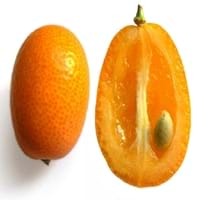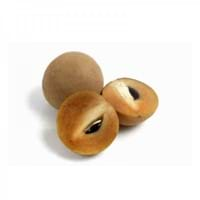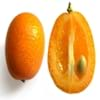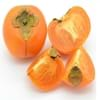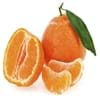Health Benefits
Cancer prevention, Cures gastro-intestinal troubles, Heart care, Increase in haemoglobin, Increases metabolic rate
Anti-inflammatory properties, Arthritis treatment, Regulates Blood Sugar, Unknown
General Benefits
Anti oxidant properties, Anti-inflammatory properties, Healing of wounds, Helps in weight loss, Strengthens bones
Boosts immune system, Controls blood sugar levels, Digestive aid
Skin Benefits
Anti-aging benefits, Reduces wrinkles, Treatment of dark spots
Nourishes skin, Protects skin from oxidative stress
Hair Benefits
Promotes longer and healthier hair, Protects hair, Shiny hair
Prevents hair loss, Promotes longer and healthier hair, Regulates hair growth
Allergy Symptoms
Abdominal pains, Coughing, Diarrhea, Digestive Problems, Drop in blood pressure, Hives, Itching, Nausea, Tingling sensation in wrist and face, Vomiting, Wheezing
Asthma, Red rash, Swelling of mouth, tongue or lips
Side Effects
Allergic reaction
Diarrhoea, Vomiting
Best Time to Eat
As a snack in the late afternoon, Don't consume at night and before bed, Eat the fresh ones, avoid mixing with any other foods, don't eat after meal., Morning time (before lunch), Strictly avoid empty stomach
As a snack in the late afternoon
Vitamin B5 (Pantothenic Acid)
Vitamin C (Ascorbic Acid)
Vitamin E (Tocopherole)
Not Available
Vitamin K (Phyllochinone)
Not Available
Lutein+Zeaxanthin
Not Available
Calories in Fresh Fruit with Peel
Calories in Fresh Fruit without Peel
Not Available
Not Available
Calories in Frozen Form
Not Available
Calories in Dried Form
Not Available
Calories in Canned Form
Not Available
Calories in Juice
Not Available
Calories in Jam
Not Available
Calories in Pie
Not Available
Season
Autumn, Winter
Winter
Varieties
Hong Kong, Marumi, Meiwa, Centenniel and Nagami
Bush Table Queen, Heirloom Table Queen, Festival Hybrid, Early Acorn Hybrid, Table Ace, Ebony and Cream of the Crop
Seedless Variety
No
Not Available
Color
Orange, Red, Yellow
Dark green, Green-yellow, Orange green
Inside Color
Orange
Not Available
Taste
Sweet, Tart
Sweetish
Origin
China
Central America, North America, Unknown
Soil Type
Clay, Sandy loam, Well-drained
Well-drained
Climatic Conditions
Cold, Warm
Cold, Sunny
Facts about
- The entire kumquat fruit is edible, except few seeds.
- The taste of kumquat skin is sweet while inner flesh is tart.
- There are some hybrid varieties of kumquats such as mandarinquats, orangequats and limequats.
- It was named as Acorn Squash for its resemblance to a large ribbed acorn.
- It is said that squash was being grown in Mexico as long as 10,000 years ago.
- It was the first food cultivated by native American Indians.
Cocktails
Yes
Not Available
Other Countries
Brazil, Mexico, Spain, United States of America
Egypt, India, Iran, Italy, Mexico, Russia, Turkey, Ukraine, United States of America
Top Importer
United Kingdom
UAE
Botanical Name
Citrus japonica
Cucurbita Pepo
Synonym
Fortunella margarita
Winter Squash
Subkingdom
Tracheobionta
Tracheobionta
Division
Magnoliophyta
Magnoliophyta
Class
Magnoliopsida
Magnoliopsida
Subclass
Rosidae
Dillenhidae
Order
Sapindales
Cucurbitales
Family
Rutaceae
Cucurbitaceae
Generic Group
Citrus fruit
Not Available
Difference Between Kumquat and Sapota
We might think that Kumquat and Sapota are similar with respect to nutritional value and health benefits. But the nutrient content of both fruits is different. Kumquat and Sapota Facts such as their taste, shape, color, and size are also distinct. The difference between Kumquat and Sapota is explained here.
The amount of calories in 100 gm of fresh Kumquat and Sapota with peel is 71.00 kcal and 40.00 kcal and the amount of calories without peel is Not Available and Not Available respectively. Thus, Kumquat and Sapota belong to Low Calorie Fruits and Low Calorie Fruits category.These fruits might or might not differ with respect to their scientific classification. The order of Kumquat and Sapota is Sapindales and Cucurbitales respectively. Kumquat belongs to Rutaceae family and Sapota belongs to Cucurbitaceae family. Kumquat belongs to Citrus genus of C. japonica species and Sapota belongs to Cucurbita genus of Pepo species. Beings plants, both fruits belong to Plantae Kingdom.
